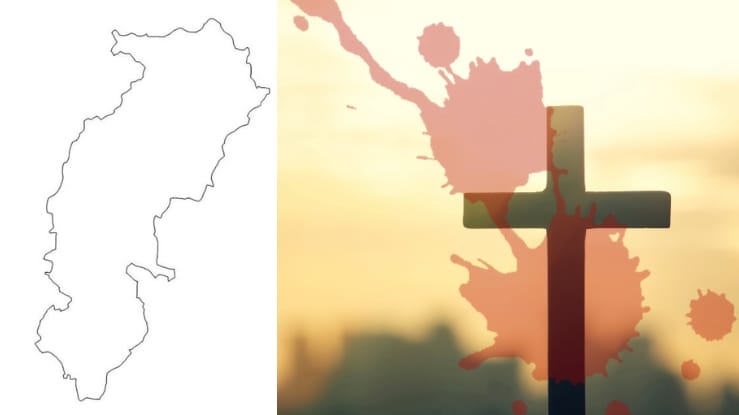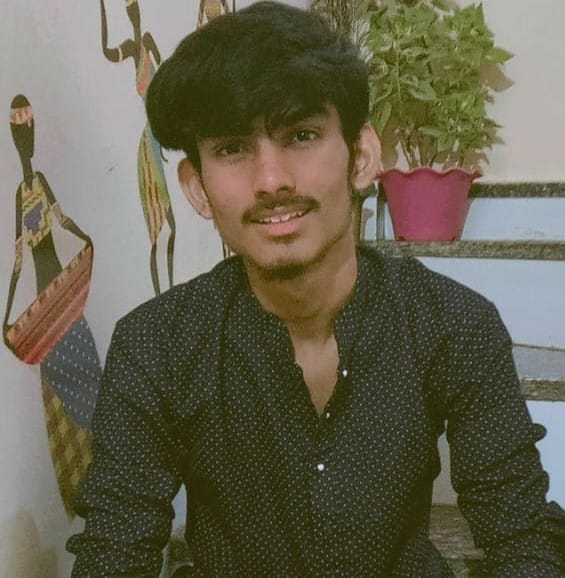Growing menaces of illegal conversion in Chattisgarh :The Enigma Explained
The practice of conversion has now, taken its toll in the state making Chhattisgarh face the brunt of conversion. Religious conversion among tribal groups in Chhattisgarh has increased after 2010. More than 75% of conversion, today are taking place in the remote corners of Chhattisgarh leaving a thrusting impact on both society and politics.

The land of Ram, Buddha and Mahavira India is not just a place where religion is a matter of faith. It’s the part of one’s identity from individual to social practices, religion is a binding force which connects hearts from hearts , lands to lands. And in the Indian democracy, secularism is what– laid in the constitution, that makes and beautifies the society.
Also the Indian constitution enshrine laws which give its citizen the right to freely preach, practice and propagate any religion of their choice and this freedom of religion which is rarely found in the fundamentals of the nation which have a particular religion in majority ; Is well described in the articles 25, 26, 27 and 28 of the Indian constitution.
Modern India came into existence in 1947 and freedom of religion in India is a fundamental right guaranteed by article 25-28 as mentioned above.
Rajni Kothari, founder of the Centre for the Study of Developing Societies has written “India is a country built on the foundations of a civilization that is fundamentally tolerant.” but all these appreciable traditions of freedom of religion does not mean that “freedom of religion is right to convert.”
Religious conversions in a multi-religious country like India is a hot button topic, burning controversy that ignites polemic debate, unleashes passionate protests and provokes vitriolic accusations and counter accusations. And specifically, if we look forward towards the growing stats of conversion in Chhattisgarh. it has stirred up a Hornets ’net in the state.
The practice of conversion has now, taken its toll in the state making Chhattisgarh face the brunt of conversion. Religious conversion among tribal groups in Chhattisgarh has increased after 2010. More than 75% of conversion, today are taking place in the remote corners of Chhattisgarh leaving a thrusting impact on both society and politics.
Demographics of intensely populated pockets of Christianity:
Presence of Christians in the country is not quite as widespread or intense as that it is in Jharkhand, Odisha and Chhattisgarh.
The presence of Christians in these regions is quite intense and growth has also been quite high. Of 2.78 crores Christians counted in 2011, 25. 80 lakhs are in these 3 states, and within these states, they are concentrated in few districts forming 3 distinct pockets.
The oldest and the largest of these pockets comprises much of the earlier undivided Ranchi district of Jharkhand, the adjoining Sundargarh district of Odisha and Jashpur component of the earlier undivided Raigarh district of Chhattisgarh.
There are 14. 8 lakh Christians in the Ranchi-Sundargarh-Raigarh pocket. The altogether population of Christians in the 3 states forms 9.3 percent of all Christians in India.
Christians in this region have grown faster than the total population during 2001-11 Unlike in India as a whole, where the share of Christians in the population has slightly declined during 2001-11, their share in this region has recorded some increase.
In this decade, Christians in India have grown by 15.5 percent, while the total population has grown by 17.7 percent. In Jharkhand-Odisha-Chhatisgarh region, the growth of total population at 17.6 percent has been similar to the Indian average, but Christians have grown by 29.6 percent.
Christian presence in the Raigarh of Chattisgarh:
Christianity seems to have arrived rather late in this district. In 1951, less than 14 thousand Christians were counted in the then undivided Raigarh (including Jashpur) district, and they formed 15 percent of the population.
At the end of the next decade, however, their population had multiplied 6.5 times to reach 90 thousand and their share had reached 8.7 percent; there was another spurt in the Christian population of the district in the following decade, which took their share in 1971 to 103 percent.
Since then. Christian presence in this district has remained around 10 percent. The period can be seen as the time when the erstwhile undivided Raigarh district witnessed rapid conversion and the Christian population increased from 2% to 10% in just two decades.
Narayanpur – District in Chattisgarh
Recently this year, in the month of January, clashes among the tribal and Christian missionaries erupted in Narayanpur, which witnessed an attack on a church in the Narayanpur.
And if we look towards the enigma of conversion in the district then it’s found that Bhumiyabeda, Teradul, Ghumiyabeda, Chiprel, Kohda, Orchha, Gudadi and many more villages, where the tribal population has converted rapidly in the last 20-25 years, embracing Christianity.
And experts say that districts like Narayanpur, which have their villages in dense forests are rapidly moving towards Christianity as of the active presence of Christian missionaries in those regions.
How Conversion became a daily practice in Chattisgarh:
The first case of Conversion in the region: Jashpur in Chhattisgarh is a major centre of Christian conversion. The first recorded incident of religious conversion of Hindus from the Scheduled Tribes category is in 1906.
A memorial is also built in Khadkona in memory of the first lot of people of Korkotoli and Khadkona villages who became Christians. A total of 56 names are inscribed on it. It is reported that they were baptized on November 21, 1906.
There is a place here, popular with name of “Saheb Kona”, where an annual event is organised, in which converted Hindus participate. Regarding ‘Saheb Kona’, locals claim that for the first time through today’s Jharkhand, the missionaries came to this place through forests and mountains and conversion started in this area.
Christian missionaries in Chhattisgarh have encouraged more conversions in areas which were already been dominated by tribals. The census figure released by the centre reveals that about 62% of these people who were converted after getting trapped by the inveigle of missionaries are living in Jashpur, Surguja and Raigarh districts. Significantly, these districts have a notable population of Scheduled Castes and Scheduled Tribes, most of whom live in rural areas.
Altogether, about 87% of the population of these districts lives in backward rural areas where Christian missionaries have been tempted to convert them.
In the year 2000, Chattisgarh was formed after it’s separation from Madhya Pradesh, and it’s believed that the situation regarding conversion in the state worsened when it’s first CM Ajit Jogi compiled his beliefs with Christianity.
During his tenure, there were several reports related to the conversion of people of the Urao community by the Christian missionaries with the administration’s help. Most of these conversions were done in Koriya, Jashpur, Marwahi, Korba of the Surguja division.
Tribals and ‘Harijans’ are the special targets of aggressive evangelization for the reason that there is no adequate provision of hospitals, schools, orphanages and other social welfare services in the scheduled or specified areas. Schools, hospitals and orphanages are used to facilitate proselytization.
Enormous sums of foreign money flow into the country for missionary work, comprising educational, medical and evangelist activities. Conversions are mostly brought about by undue influence, misrepresentation, etc., or in other words not by conviction but by inducements.

contemplating society and politics through cultures.)


